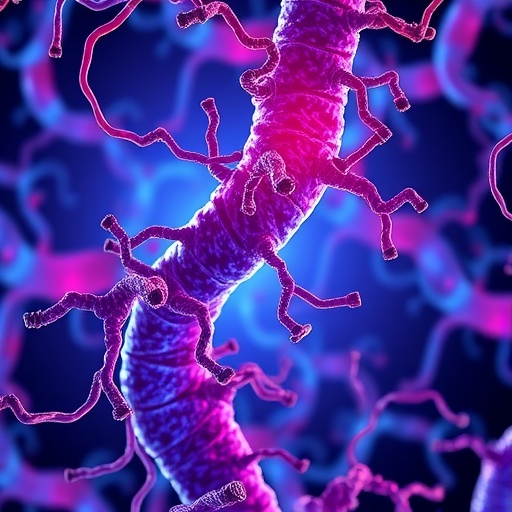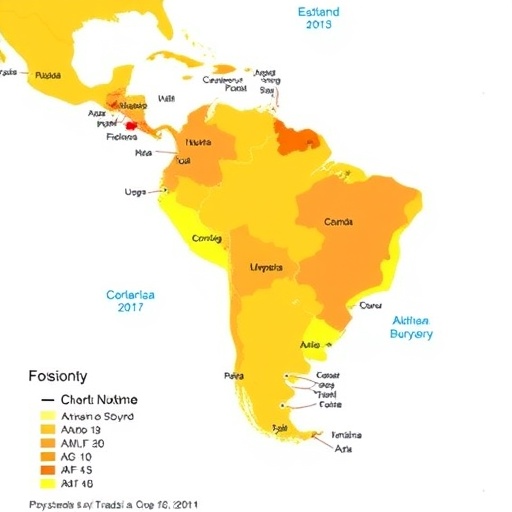
In a groundbreaking study published recently in Nature Communications, researchers have uncovered a critical cellular mechanism by which major vault protein (MVP) in endothelial cells mitigates vascular remodeling, a process central to numerous cardiovascular diseases. This discovery sheds new light on the intricate interplay between cellular quality control systems and vascular health, opening unprecedented avenues for therapeutic interventions targeting mitophagy, the selective autophagic degradation of mitochondria, mediated by the E3 ubiquitin ligase Parkin.
Vascular remodeling—the structural alteration of blood vessel walls—occurs in pathological contexts such as atherosclerosis, hypertension, and restenosis after angioplasty. It involves changes in cellular composition and extracellular matrix, leading to impaired vascular function. While endothelial cells lining blood vessels play a pivotal role in maintaining vascular homeostasis, their dysfunction is recognized as a key contributor to progressive vascular disease. Until now, the molecular underpinnings that regulate endothelial resilience and adaptation during remodeling remained incompletely understood.
The study spearheaded by Jiang, Bai, Hu, and colleagues centers on major vault protein, a highly conserved and abundant cytoplasmic protein initially characterized as a component of ribonucleoprotein particles called vaults. MVP’s physiological function has long been enigmatic, with previous research implicating it in multidrug resistance in cancer and intracellular transport. This latest research identifies MVP as a crucial regulator within endothelial mitochondria quality control pathways, particularly in orchestrating Parkin-mediated mitophagy.
Mitophagy serves as a specialized form of autophagy, eliminating damaged or dysfunctional mitochondria to preserve cellular bioenergetics and minimize reactive oxygen species (ROS) accumulation. Dysregulated mitochondrial turnover has been increasingly linked to endothelial dysfunction, oxidative stress, and vascular pathologies. Parkin-mediated mitophagy involves the E3 ubiquitin ligase Parkin tagging defective mitochondria, marking them for degradation via lysosomal pathways. The researchers demonstrated that MVP potentiates this process, enhancing endothelial mitochondrial turnover and thereby attenuating vascular remodeling.
Through a series of comprehensive in vitro and in vivo experiments, the authors meticulously delineated the MVP-Parkin axis’s role. Endothelial cells deficient in MVP exhibited compromised mitophagy, mitochondrial fragmentation, and elevated oxidative stress markers. Conversely, overexpression of MVP catalyzed robust mitophagic flux, preserving mitochondrial integrity under stress conditions relevant to vascular remodeling stimuli. Intriguingly, MVP was shown to physically interact with Parkin, facilitating its translocation to damaged mitochondria.
The team utilized advanced imaging techniques, including fluorescence microscopy coupled with mitophagy-specific reporters, to visualize mitochondrial dynamics and autophagosome formation in endothelial monolayers exposed to pathological stressors. In animal models, endothelial-targeted MVP knockdown exacerbated vascular remodeling following injury, with pronounced intimal hyperplasia and extracellular matrix deposition. This phenotype was significantly rescued by genetic or pharmacological enhancement of Parkin activity, confirming the functional interdependence of MVP and Parkin in endothelial cells.
At the molecular level, the data suggest that MVP serves as a scaffold or chaperone that accelerates Parkin’s recruitment and ubiquitination activity on depolarized mitochondria. This mechanistic insight clarifies previous ambiguities regarding MVP’s cellular role and elucidates how vascular endothelial cells maintain mitochondrial homeostasis during injurious stimuli. It also positions MVP as a potential biomarker and target to modulate mitophagic clearance in cardiovascular disorders.
The implications of these findings are broad and profound. Cardiovascular diseases remain the leading cause of mortality worldwide, with limited interventions addressing fundamental cellular dysfunction in vascular remodeling. By unraveling the MVP-Parkin mitophagy axis, this study paves the way for developing novel therapeutics aimed at bolstering mitochondrial quality control in endothelial cells, potentially halting or reversing pathological vessel remodeling.
Importantly, the authors propose that modulating MVP expression or mimicking its activity could be harnessed to fine-tune mitophagy without triggering detrimental autophagic overactivation, a balance that is crucial for cell survival. Moreover, MVP’s abundant expression makes it an attractive candidate for drug delivery strategies or gene therapy vectors targeting the vascular endothelium.
This work also enriches our understanding of mitochondrial dynamics in endothelial biology. Traditionally, research on endothelial dysfunction emphasized oxidative stress, inflammation, and hemodynamic forces. The revelation of a decisive mitophagy regulatory node mediated by MVP introduces an additional layer of complexity and therapeutic opportunity, underscoring mitochondria quality control as a cornerstone of vascular health.
The integration of cellular biology, molecular genetics, and cutting-edge imaging solidifies the study’s robustness and translational potential. Future research, as highlighted by the authors, should explore MVP’s regulation under diverse pathological conditions, its interactions with other mitophagy adaptors, and the feasibility of MVP-targeted interventions in clinical settings.
In sum, Jiang and colleagues have illuminated a vital cellular process intersecting mitochondrial quality control and vascular remodeling by defining the role of endothelial major vault protein in enhancing Parkin-mediated mitophagy. This discovery not only advances our molecular understanding of vascular diseases but also heralds a promising frontier for therapeutic innovation in cardiovascular medicine.
Subject of Research: The role of endothelial major vault protein in alleviating vascular remodeling through promotion of Parkin-mediated mitophagy.
Article Title: Endothelial major vault protein alleviates vascular remodeling via promoting Parkin-mediated mitophagy.
Article References:
Jiang, B., Bai, F., Hu, Y. et al. Endothelial major vault protein alleviates vascular remodeling via promoting Parkin-mediated mitophagy. Nat Commun 16, 4365 (2025). https://doi.org/10.1038/s41467-025-59644-y
Image Credits: AI Generated
Tags: atherosclerosis and hypertensioncellular quality control systemsE3 ubiquitin ligase Parkinendothelial cell functionmajor vault proteinmitochondrial degradation and endothelial resiliencemitophagy and cardiovascular healthMVP and vascular remodelingNature Communications study on MVPselective autophagic degradationtherapeutic interventions for vascular healthvascular disease mechanisms





